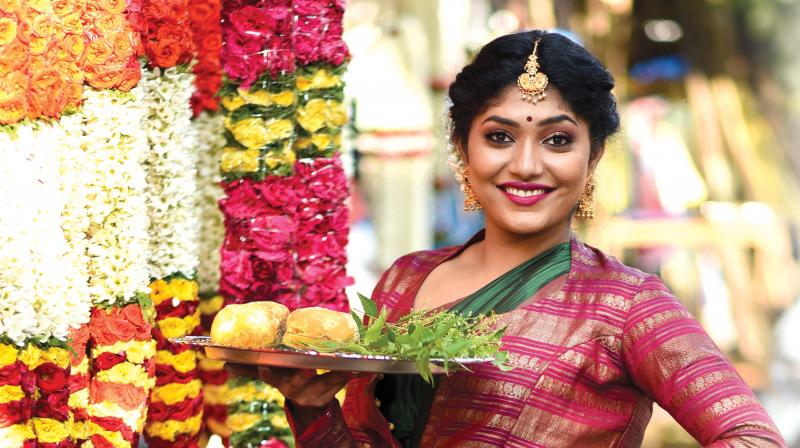Ugadi's many flavours
This New Year's Day is not just celebrated by Kannadigas alone but even the Telugus, Maharastrians and Sindhis have their own special day.

Rangolis made of myriad hues, scrumptious holige and a dose of bevu-bella, Ugadi aka New Year's Day is a date of festivities for Kannadigas. This vibrant habba is celebrated not just by Kannadigas, but also people from various linguistic backgrounds in the city. While Telugus call it Ugadi, Maharashtrians call it Gudi Padwa and Sindhis celebrate the day as Cheti Chand. Young Bengalureans from various backgrounds share their plans for the auspicious day…
For Kannadathi and actress Samyukta Hornad, every Ugadi has been a huge family affair where everybody gets together at her grandmother, veteran artiste Bhargavi Narayan's house. “My parents, my uncle Prakash Belawadi's family and others get together and celebrate the habba at my Ajji's house.
We have a potluck lunch where each family prepares a special dish and every year, I end up making aambode as that’s the only dish I can make!” she smiles.
For homemaker and Telugu Lakshmi Praveen, Ugadi is a major family event. “Since childhood, I’ve been bringing it in with my folks. We do the puja with the new Panchangam (the Hindu calendar) and eat bevu (neem) and bella (jaggery), hoping that the New Year has lots of sweet and very little sour experiences to look forward to. It’s also a time to wear and revel in new clothes,” she says.
For the Sindhi community, the New Year is celebrated as Cheti Chand, a day which marks the start of the spring season. “It’s the birthday of our deity Jhulelal. The community gathers together at the Jhule Lal Sai Temple and sings songs and reads stories of the lord. We do a puja and then eat the bahndaro (food prepared at the mandir) together as one big family. Sindhi specialties such as Taayari (sweetened rice), saao saag (green vegetable curry) and chola are prepared. We wear new clothes, distribute sweets and remind each other that we must have compassion for all beings. In the evening, we keep a bhairano (made of wheat flour, kesar, dry fruits etc) again after which everyone heads to the river and puts in the food for the fishes to eat,” shares yoga teacher Priya Sukhwani.
The Sankethis are another group that fervently brings in the New Year. Sisters Pragnya and Shruti Kashinath reveal, “The origin of Sankethis can be traced back to Sengottai in Tamil Nadu. The Sankethis decided to settle down in Karnataka. The language we speak can be considered a Tamil dialect – however, all our religious practices are the same as those followed by Kannada Brahmins. On Ugadi, a mixture of neem leaves and jaggery is consumed and the house entrance is decorated with a stream of mango leaves. The traditional South Indian banana leaf meal is served comprising of payasa, kosambari, puliyogare and obattu.”
Marathi people too celebrate the day, as Gudi Padwa. Jay Masekar, who hails from Belgaum says, “Our day starts with taking a holy bath, following which Gudi (a stick covered in a bright cloth covered with an inverted silver or copper pot) is prepared. Rangoli is drawn in the frontyard and puran poli (which is similar to obbattu) is prepared for lunch. We also perform special pujas today.” Whatever name you call it by, here’s hoping that the New Year brings each one of you lots of prosperity and happiness!

